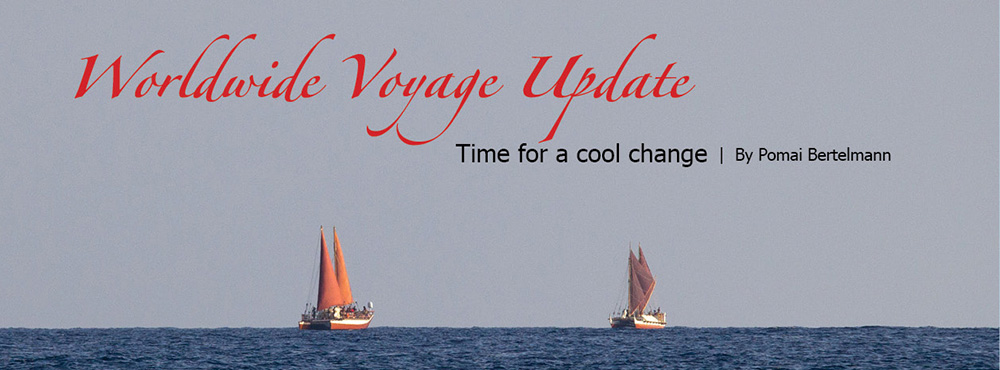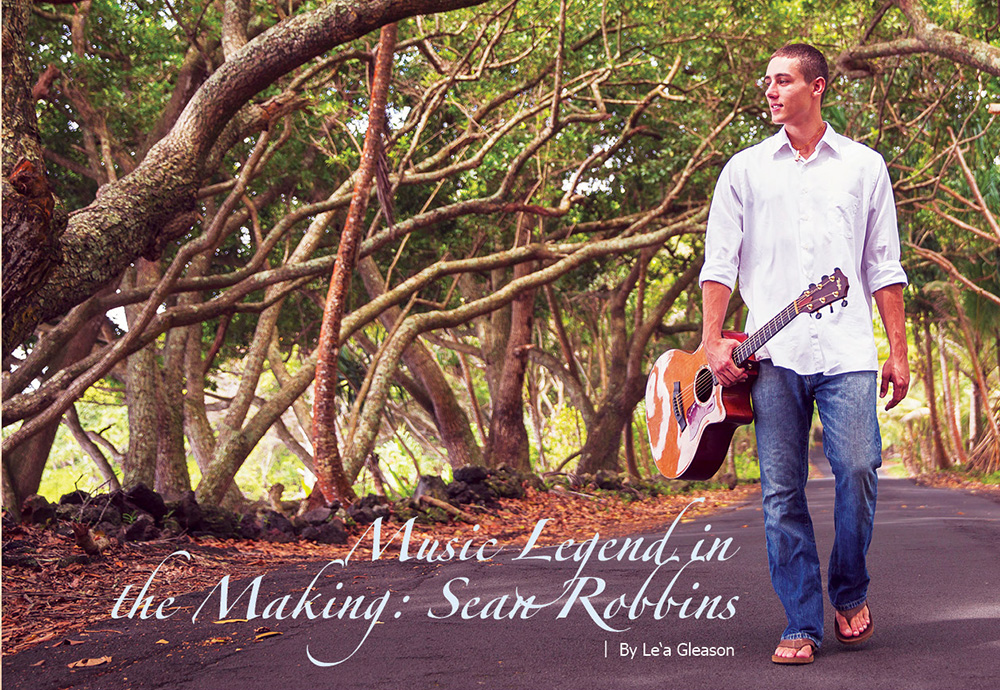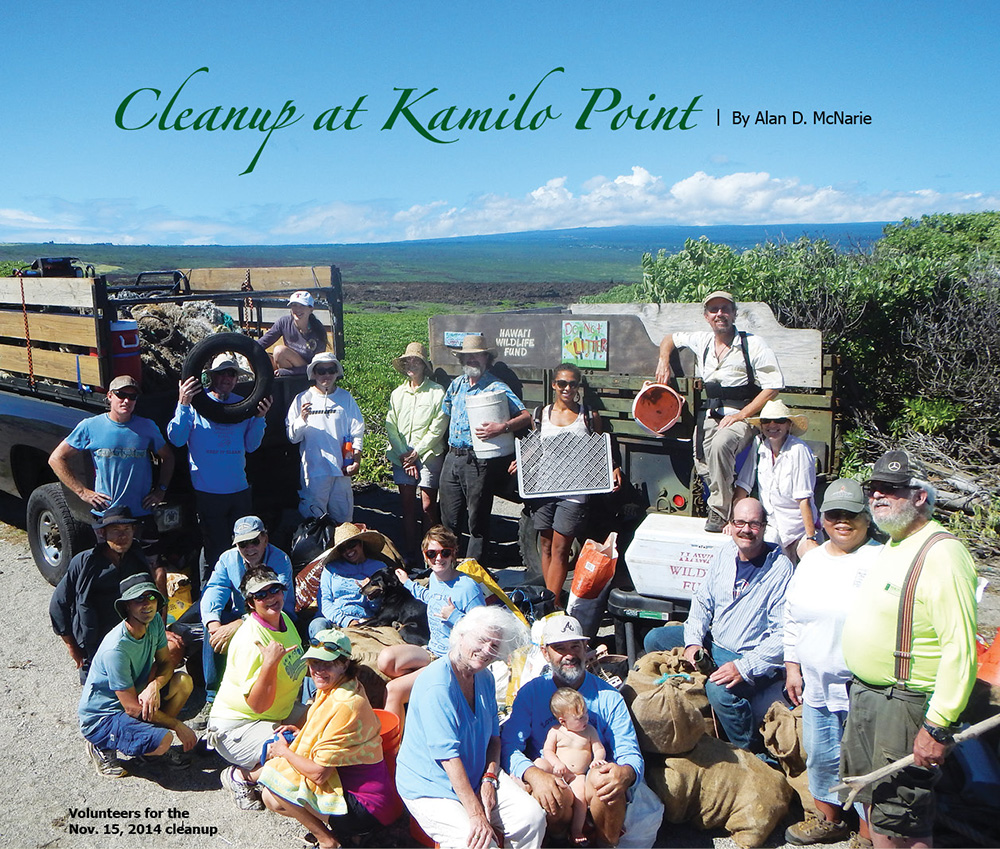
Worldwide Voyage Update: Time for a Cool Change

In one breath, we are reminded that we are kanaka honua, men of the land, and that there is a point after our time on the ocean when we must return home. These reminders—the anchor of Kupe, the dunes that shroud his waka, the mighty Kauri and her understory—help us to rejoin our pili to the ‘āina once again.
With each mile of blue ocean that has passed under her hulls, we consciously create a repository in our DNA of the stories, places and people who have touched and changed our lives.
Stepping off the deck and onto shore is sobering and quite exhilarating. Aotearoa, our destination has been in the grand design since voyaging canoes started to traverse the oceans eons ago.
Twenty-nine years ago our makua sailed Hōkūle‘a to these shores becoming the lashing that would bind cultures and people. This bridge would empower future generations to work in a spiritual and physically conscious way, reenergizing the mauli in the Pacific and creating a generation of warriors and leaders whose course of life would be led by traditional values, wisdom and knowing.
Warm hands interlock as we gather for our last karakia (pule) as the crew who has accompanied Hōkūle‘a and Hikianalia to Aotearoa.
We grace her into the loving hands of “the uncles,” the men who knew Hōkūle‘a before, during, and after her birth. It is their feats of courage, sacrifice and belief in a better life for their descendants that make us ‘Ohana Wa‘a, the canoe family.
They are the cornerstone of our essence and the reason why this voyage, Mālama Honua is so vital.
The words of one of our family anthems fill my head:
Time for, a cool change,
I know that its time for a cool change.
And now that my life is so prearranged
I know that its time for a cool change.
Each of them represent the men, women, and families who birthed, carried out, and sustained the wa‘a movement. Their legacy precedes them—their stories reveal them—but the gold are the skills that they possess that are breathed into a new generation. It will take time for us to morph into their knowing. We are humbled that we all can learn from them.
The karakia (pule) is offered and goodbyes are said. How do we say goodbye to those who have been our life line for the past six weeks? How do you leave the island home that has sustained you over a thousand plus miles effortlessly?
The answer lies in our Koumatua, ‘anakala Joe Everette.
Uncle takes us on a huaka‘i (journey) to Hokianga where we stand within two feet of the anchor of the great navigator Kupe.
We are introduced to the nature and the feats of this great man by oral recitation from a descendant of Hokianga. He knows this land like the back of his hand and Kupe’s experiences like they were his own. He shares that the heights of the massive sand dunes that almost block out the horizon encases Kupe’s wa‘a who till this day is buried under years of the magic dust that has preserved it.
After this mind blowing experience Uncle Joe then takes us to the Waipoua Forest reserve. This is home for the 3,000 year old Te Matua Nahere and the 2,000 year old Tane Mahuta and the Four Sisters. These kauri giants bring us back to the reality of why we do wa‘a. These trees, like the mighty koa and the canopy that he is protector of at home, are the cores of our being. They are the cloud makers. They are the rain catchers. They are the water cycle. Kupe traversed this forest looking for abundant supplies of food, medicine, fire and shelter that would sustain his ‘Ohana Wa‘a. Even today, every wa‘a navigator and captain seeks out these same supports for his canoe family upon landfall.
Our necks fall back and become pained as we strain to hold it in place to take in the full view of this giant. This is a sacrifice worthy of the sacredness of this visit.
We harmonize our energies with that of Tane Mahuta as we offer him the Wai a Ke Akua from the portal of Waiau on our majestic Maunakea.
In one breath we are reminded that we are kanaka honua, men of the land and that there is a point after our time on the ocean when we must return home.
These reminders, the anchor of Kupe, the dunes that shroud his waka, the mighty Kauri and her understory—help us to rejoin our pili to the ‘āina once again.
How great the wisdom of our kūpuna to create a process of navigation and way finding on land, our means of entering back into the world that is truly ours.
Our family anthem rings true once more:
Now I was born in the sign of water,
And it’s there that I feel my best,
the Albatross and the whales they are my brothers.
It’s kind of a special feeling,
when you’re out on the sea alone,
staring at the full moon like a lover.
These words will continue to ring true each time we sing them. They are a magnet calling us back into the life that we lead on the ocean for a specific moment in time. For now we return to our families and loved one’s fully conscious of our transformation back from the sea.
Hōkūle‘a, wa‘a aloha e,
holo i ka Moananuiakea e.
Hōkūle‘a wa‘a aloha,
mālama honua i ka ‘oli. ❖
Used with permission by Pomai Bertlemann.
Photo: Hōkūle‘a Image ® Polynesian Voyaging Society
Photo © ‘Ōiwi TV. Photographer: Kaipo Kī‘aha
Connect with the World Wide Voyage
Learning Center
Track the voyage
Google Hangout
Lyrics to “Cool Change” copyright Little River Band, ©1979


